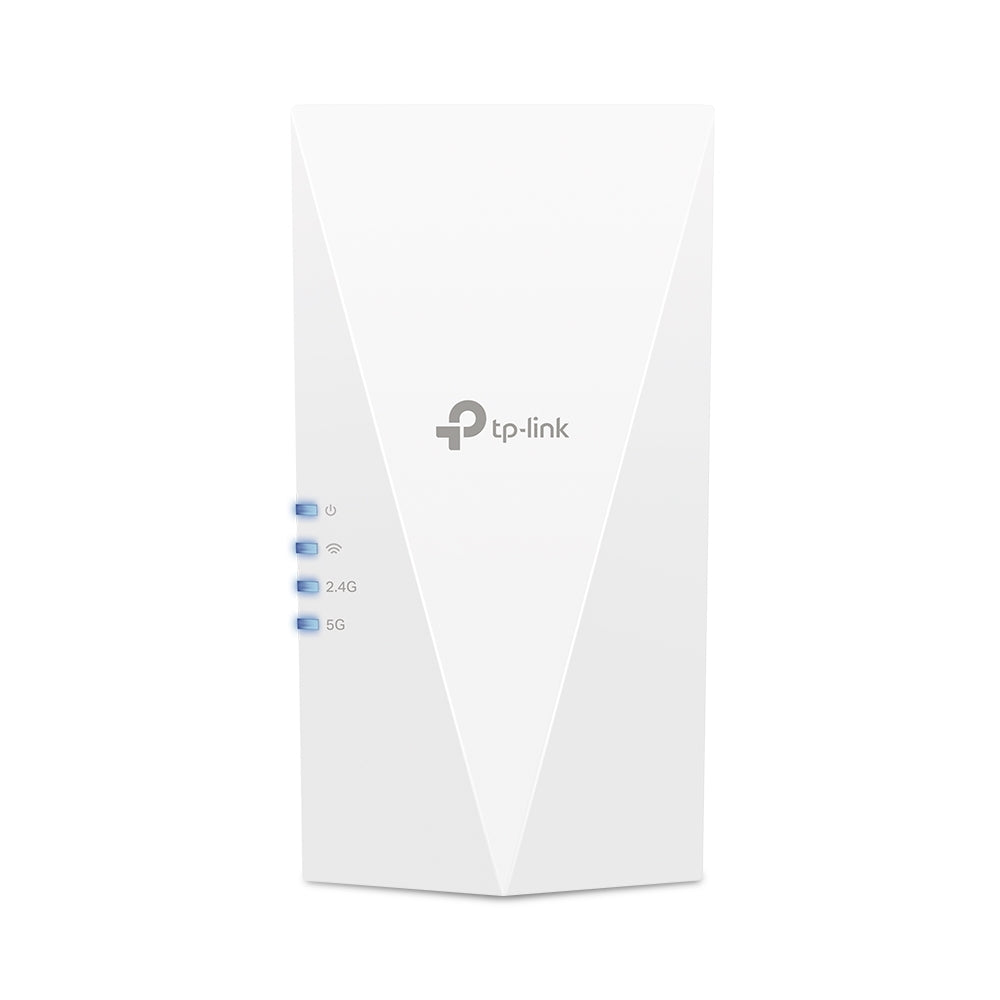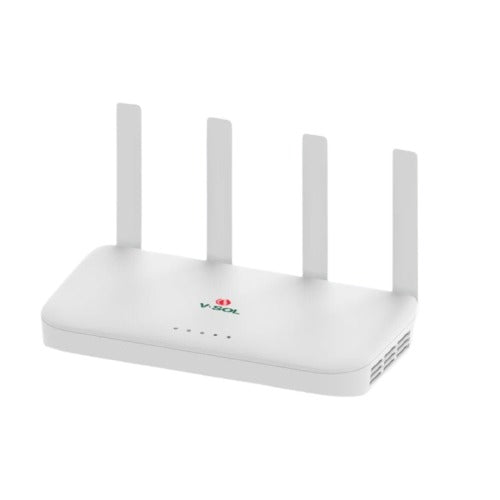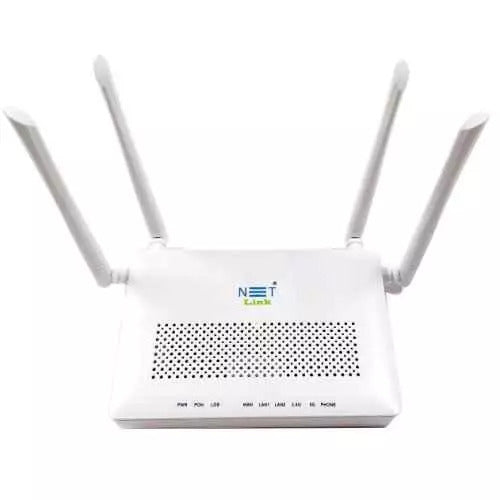
Aruba vs. Cisco - A comparison of enterprise-class Wi-Fi access points
Among Aruba vs. Cisco APs, which is the most reliable? As enterprise organizations become more mobile and users demand higher bandwidth. Legacy Wi-Fi systems often strain under the load of modern digital workplaces. Upgrading to the latest enterprise-class Wi-Fi 6 access points enables IT teams to deliver wireless connectivity today's enterprises need. Two leading vendors of enterprise-grade Wi-Fi equipment are Aruba and Cisco. Compared to Aruba's 655 access points and Cisco's 9136 access points.
Aruba vs. Cisco - Selecting Wi-Fi access points
When evaluating access points for your enterprise Wi-Fi network, some of the key factors to consider include:
- Performance - Throughput, capacity, bandwidth optimization
- Reliability - Uptime, fault tolerance, survivability
- Security - Encryption, user authentication, rogue AP detection
- Scalability - Number of supported clients, controllers
- Ease of management - Configuration, monitoring, troubleshooting
- Integration - Compatibility with existing network infrastructure
- Cost - Upfront cost, maintenance, power consumption
If you're choosing enterprise Wi-Fi, consider these criteria.
Aruba vs. Cisco - Features and technology comparison
Aruba and Cisco take different technology approaches to deliver secure, high-performance Wi-Fi connectivity. Here are some comparisons:
|
Features |
Cisco 9136 |
|
|
Radios |
Tri-radio (2.4GHz/5GHz/6GHz) |
Tri-radio (2.4GHz/5GHz/6GHz) |
|
Wi-Fi Standards |
802.11ax Wi-Fi 6E |
802.11ax Wi-Fi 6E |
|
MIMO |
4x4 MU-MIMO |
4x4 MU-MIMO |
|
Antennas |
Internal, omni-directional |
Internal, omni-directional |
|
Wireless Standards |
802.11a/b/g/n/ac/ax |
802.11a/b/g/n/ac/ax |
|
Wired Ports |
2x RJ-45 (2.5/5Gbps) |
2x RJ-45 (2.5/5Gbps) |
|
PoE Support |
802.3af/at/bt |
802.3af/at/bt |
|
Security |
WPA3, 802.1X, TPM |
WPA3, 802.1X, Trust Anchor |
|
Management |
Aruba Central |
Cisco DNA Center |
Key differences are Aruba's containerized operating system optimized for cloud and mobility, versus Cisco's standard IOS-XE operating system. For management, Aruba Central offers simplified cloud-based control while Cisco DNA Center provides on-premises control.
Aruba vs. Cisco - Wi-Fi 6E Performance
Aruba
A key highlight of the AP 655 supports Wi-Fi 6E, which extends Wi-Fi into the new 6 GHz band. Key advantages Wi-Fi 6E provides include:
- Increased bandwidth - Up to 1.2 Gbps of interference-free spectrum.
- Reduced congestion - 14 extra 80MHz channels available only for Wi-Fi 6E devices.
- Higher throughput - Multi-Gbps speeds with newer Wi-Fi 6E clients.
- Lower latency - Optimized for time-sensitive apps like videoconferencing.
- Enhanced reliability - More bandwidth and less interference means greater resilience.
With a pristine 6 GHz spectrum, the AP-655 can deliver up to 7.8 Gbps throughput utilizing advanced capabilities like MU-MIMO, 1024 QAM, and OFDMA scheduling. The enterprise wireless performance benchmark has been set.
Cisco
The Catalyst 9136 lineup is among the industry's first enterprise Wi-Fi access points to support the new Wi-Fi 6E standard. Also, to the existing Wi-Fi 6, this new 6 GHz band is supported. Key benefits Wi-Fi 6E provides include:
- Increased bandwidth - Up to 1.2 Gbps of interference-free spectrum.
- Reduced congestion - 14 extra 80 MHz channels available in 6 GHz.
- Higher throughput - Multi-Gbps speeds with new Wi-Fi 6E clients.
- Lower latency - Optimized for time-sensitive applications.
- Enhanced reliability - More bandwidth and less interference.
With the pristine 6 GHz spectrum, the Catalyst 9136 can deliver up to 10.8 Gbps throughput utilizing tri-band 4x4/8x8 radios and advanced capabilities like MU-MIMO and OFDMA scheduling. Enterprise wireless speeds and reliability improve.
Aruba vs. Cisco - Performance metrics
Wi-Fi network reliability depends on understanding the performance capabilities of Aruba and Cisco access points. Here's how the two solutions compare:
|
Metric |
Aruba 655 |
Cisco 9136 |
|
Max Throughput |
7.8Gbps |
10.2Gbps |
|
Typical Throughput |
1-3 Gbps |
1-3 Gbps |
|
Max Clients |
1024 clients |
2048 clients |
|
Max APs per cluster |
2048 |
6000 |
While Cisco has a higher max throughput, both deliver excellent real-world throughput from 1-3Gbps under typical loads. For scaling, the Aruba 655 supports 1024 clients per AP while the Cisco 9136 supports 2048 clients. Cisco also allows clustering up to 6000 APs, versus 2048 for Aruba's architecture. It gives Cisco better high density and scalability on large campuses.
Innovative 4x4 MIMO tri-band architecture
Aruba
At the core of the AP-655 is a high-speed 4x4 MIMO tri-band architecture:
- 4x4 Wi-Fi 6E radios - One each for 2.4GHz, 5GHz and new 6GHz.
- Up to 7.8Gbps total speed - 4.8Gbps in 6GHz, 2.4Gbps in 5GHz, 1.1Gbps in 2.4GHz.
- OFDMA scheduling - Increased efficiency and reduced latency.
- MU-MIMO - Spatial stream reuse boosts client capacity.
- 20 to 160MHz channels - Higher bandwidth options.
- 1024 QAM modulation - Higher data rates in clean RF environments.
This leading-edge radio design allows the AP-655 to unlock Wi-Fi 6E performance and serve many clients.
Cisco
At the core of the Catalyst 9136 is a high-speed 4x4/8x8 MIMO tri-band architecture:
- 4x4 Wi-Fi 6E radios - One each for 2.4GHz, 5GHz and new 6GHz.
- 8x8 5GHz radio - For very high throughput.
- Up to 10.2 Gbps total speed - 4.8Gbps (6GHz), 4Gbps (5GHz), 1.2Gbps (2.4GHz).
- OFDMA scheduling - Increased efficiency and reduced latency.
- MU-MIMO - Spatial reuse to maximize client capacity.
- 20 to 160MHz channels - Higher bandwidth options.
Enterprise environments enjoy Wi-Fi 6E's advanced radio design.
Internal Omni-directional Antennas
Aruba
The AP-655 utilizes internal omni-directional antennas tuned for indoor usage:
- Horizontal ceiling mount oriented
- Peak gain of 4.6dBi (2.4GHz), 5.2dBi (5GHz), 5.4dBi (6GHz)
- 30-40° down-tilt to optimize wireless coverage
- Reduces interference with directional signal focus
- Avoids the need for external antennas - simplified install
These integrated antennas provide optimized 360° Wi-Fi coverage in indoor enterprise settings.
Cisco
The Catalyst 9136 utilizes internal omni-directional antennas optimized for indoor usage:
- Horizontal ceiling mount oriented.
- Peak gain of 4dBi (2.4GHz), 5dBi (5GHz) and 6dBi (6GHz).
- 30-40° down-tilt to focus wireless signal.
- Omni-directional pattern for 360° coverage.
- Avoids the need for external antennas - simplified install.
Indoor enterprise networks enjoy integrating antennas.
Aruba vs. Cisco - A high-density solution
Aruba
With exponential growth in users, devices, and sensors, network capacity and efficiency are imperative. As an enterprise-grade Wi-Fi 6E AP, the AP-655 supports dense deployments with features including:
- High client capacity - Up to 2,048 clients supported per AP.
- Efficient coverage - Internal omni antennas optimized for indoor use.
- Load balancing - Clients distributed to least loaded radios.
- AirMatch - Machine learning tuned RF management.
- DFS support - Radios handle frequency changes.
- Dual Ethernet - 2 x 2.5G/5G/10G ports for redundancy.
These capabilities allow the AP-655 to operate in crowded wireless environments.
Cisco
With Wi-Fi usage in enterprises exploding, networks need to handle high client density. The Catalyst 9136 supports dense deployments with features including:
- High client capacity - Up to 2,000+ clients supported per AP.
- Flexible coverage - Internal antenna models offer optimal omnidirectional coverage.
- Band steering - Ensure clients are in the optimal 2.4/5/6 GHz band.
- Load balancing - AP-wise distribution of clients.
- DFS support - Radios handle dynamic frequency changes.
- Intelligent Capture - AI-powered analytics for performance insights.
These capabilities allow the Catalyst 9136 to support many simultaneous client devices across many bands for superb Wi-Fi experiences.
Carrier-grade resiliency
Aruba
For always-on wireless connectivity, the AP-655 provides robust redundancy:
- Dual Ethernet - 2 x 2.5G/5G/10G ports with hitless failover.
- Tri-radio flexibility - Independent 2.4GHz, 5GHz and 6GHz radios.
- Uplink diversity - Intelligent traffic steering across uplinks.
- Fast failover - Sub-second failover between radios and Ethernet.
Providing enterprise-grade resilience through many signal paths.
Cisco
For always-on connectivity, the Catalyst 9136 provides robust redundancy:
- Dual multi-gigabit Ethernet - 2 x 2.5G/5G/10G ports with 08.3bt UPoE power.
- Tri-radio flexibility - Independent 2.4GHz, 5GHz and 6GHz radios.
- Fast failover - Sub-second failover between radios/Ethernet ports.
- Quad-radio mode - A dynamic conversion to 4x4x4 radios.
With many wired and wireless links, intelligent failover ensures continuous up-time even if an interface fails or needs maintenance. This carrier-class resiliency meets enterprise demands.
Cloud-based analytics
Aruba
Aruba APs work together with Aruba Central, a unified cloud platform that provides:
- Single pane of glass - Across wired/wireless infrastructure.
- Client insights - Location services, device profiling.
- Application analytics - Traffic analysis, QoS monitoring.
- AI optimization - Automated infrastructure tuning and issue resolution.
- Easy troubleshooting - Historical charts, logs, and packet analysis.
Admins get data-driven insights and operations automation.
Cisco
Cisco's DNA Center platform supports the Catalyst 9136:
- Unified network visibility - Single dashboard for wired/wireless.
- Client insights - Location tracking, device profiling.
- Application awareness - Traffic analysis, QoS monitoring.
- Automation - Simplified policy, configuration management.
- AI analytics - Anomaly detection, performance optimization.
- Easy troubleshooting - Remote monitoring, diagnostics.
It supplies rich analytics into clients, devices, and applications while applying AI to automate operations and troubleshoot issues.
Flexible and secure network policy enforcement
Aruba
The AP-655 allows simplified segmentation and access controls:
- Role-based access - Apply appropriate policies for users and devices.
- Traffic segmentation - Separate IoT devices from their network.
- Application visibility - Define rules based on app type.
- Dynamic ACLs - Access lists adapted to posture checks.
- Secure connectivity - Stateful firewall, encryption, WPA3 security.
These features provide secure access to people, places, and things across the enterprise.
Cisco
The Catalyst 9136 allows granular policy enforcement and segmentation:
- Role-based access - Apply custom access policies for users and devices.
- Traffic segmentation - Create a separate network for IoT devices.
- Application awareness - Define policies based on app categories.
- Session analytics - See application volumes and performance.
- Secure connectivity - Encryption, authentication, WPA3 security.
Powerful identity and device controls allow connecting anything, anywhere within the enterprise. IoT and users are growing in number, so this is vital.

Aruba vs. Cisco - Advanced IoT support
Aruba
Here are some of the key capabilities that enable Aruba AP-655 Wi-Fi 6E access points to support Internet of Things deployments:
- Dual-band Bluetooth 5 and Bluetooth Low Energy (BLE) radio - Allows connectivity to BLE-enabled IoT devices like tags, sensors, asset trackers, etc.
- Integrated Zigbee radio - Enables integration of Zigbee-based IoT devices such as lighting controls, HVAC sensors, and smoke detectors.
- USB 2.0 port - Can connect external IoT hardware like cameras, digital signage, and environmental sensors. Provides up to 5W power delivery.
- Advanced IoT Coexistence - Allows many radios like Zigbee, BLE, and Wi-Fi to operate in the 2.4GHz band without interference.
- ArubaOS container hosting - Runs lightweight IoT controller software like MQTT brokers on the AP, eliminating overlay gateways.
- Segmentation and role-based firewall - Isolate IoT devices into their network segment with access controls.
- Location services - Leverage integrated BLE radio for asset tracking, condition monitoring, and wayfinding.
- High performance and density - Robust Wi-Fi 6E support to connect thousands of devices.
- Aruba Central integration - Unified visibility, monitoring, and management of wired, wireless, and IoT.
- Green AP mode - Turns off unused radios to conserve power based on IoT device requirements.
An enterprise-grade platform that offers advanced Wi-Fi, multi-protocol radios, and computing power at the edge.
Cisco
Here is an overview of how the Cisco Catalyst 9136 series Wi-Fi 6E access points support Internet of Things (IoT) environments:
- Dual-band Bluetooth 5 and Bluetooth Low Energy (BLE 5.0) radio - Enables connectivity to Bluetooth-based IoT devices like asset tags, sensors, switches, etc. Device location, monitoring, and control are all essential.
- Zigbee radio (802.15.4) - Allows integration of Zigbee-enabled IoT devices like smart lights, thermostats, and sensors. Provides up to 6dBm send power.
- USB 2.0 port - Can connect external IoT devices like cameras, digital signage, and custom hardware modules. Provides up to 5W power delivery.
- 5G/5G/10G Ethernet - High-speed wired connectivity for bandwidth-intensive IoT applications.
- Container hosting support - Allows IoT controller software like MQTT brokers to run on the AP, eliminating the need for separate gateways.
- Application hosting framework - Enables deployment of custom IoT apps on the AP using SDKs and open APIs.
- Dynamic segmentation - Isolate IoT devices into their network segment.
- Dynamic ACLs - Access controls adapted based on device type, credentials, or posture checks.
- Location tracking - Integrated BLE enables asset positioning and condition monitoring.
- Cisco DNA Center - Centralized visibility, monitoring, and control for IoT.
Multi-protocol radios, wired connections, edge computing, and reliable Wi-Fi 6E support give the Catalyst 9136 a versatile foundation for mass-scale Internet of Things management.
Simplified deployment and lifecycle management
Aruba
Aruba Central's unified cloud management simplifies deploying and managing the AP-655:
- Zero-touch provisioning - AP auto-configures once Internet access is available.
- Configuration templates - Reuse profiles for quick provisioning.
- Over-the-air updates - Wirelessly push firmware and configs.
- REST APIs - Automate configurations and extract data.
- Remote Packet Capture - Remotely capture traffic for offline analysis.
Together this reduces IT overhead from initial rollout through ongoing maintenance.

Aruba Instant On or Instant comparision
Cisco
Cisco offers many options to deploy and manage Catalyst 9136 access points:
- Cisco DNA Spaces - Cost-effective cloud platform for small/medium networks.
- Cisco DNA Center - On-premises controller ideal for large campus networks.
- Cisco SD-Access - Enables fabric integration with Catalyst switches.
- Cisco Meraki Cloud - Cloud management for distributed multi-site networks.
Templates, zero-touch provisioning, and REST APIs also ease deployment at scale while third-party network management platforms can leverage open APIs. Small and large businesses enjoy it.
Aruba vs. Cisco - User experience and service quality
Mobile business applications need great user experiences. Aruba and Cisco provide intelligent QoS features like:
- Band steering - Direct clients to optimal 2.4GHz/5GHz bands
- ClientMatch - Match clients to the best AP based on current conditions
- Airtime fairness - Share Wi-Fi airtime between clients
- Roaming assist - Optimize roaming during AP handoffs
It allows them to optimize performance as clients move and conditions change. Prioritizing voice, video, and high-priority traffic is possible. Furthermore, they help IT track user experience with traffic visibility and network analytics. Mobile productivity benefits from both.
Cisco generally has higher upfront hardware and licensing costs but offers flexible perpetual or subscription licensing. Aruba offers device-level licensing that can scale more with device growth.
Extended support is available from both. Ongoing management overhead is comparable. For large deployments, Aruba Central's cloud management makes it easier to scale while minimizing IT overhead. A Cisco DNA Center deployment and management need more IT resources. TCO depends on the deployment size, density, and other variables. For medium to large enterprises, Aruba often has a cost advantage due to cloud-based management and device licensing models.
Aruba vs. Cisco - Future trends
Wi-Fi technology continues advancing. Some key trends shaping the future of enterprise wireless include:
- Wi-Fi 6E - Access points that use the new 6 GHz band provide more bandwidth and reduce congestion.
- 5G-Wi-Fi integration - Seamless handoff between Wi-Fi and 5G cellular will expand mobility.
- AI-driven analytics - Machine learning enhances network automation and provides deeper user insights.
- Location services - Leveraging Wi-Fi location data will enable advanced use cases like wayfinding and proximity-based notifications.
Both Aruba and Cisco are developing next-gen Wi-Fi 6E access points and integrating AI-driven analytics into their platforms. 5G-Wi-Fi convergence is also in the works with cellular providers. Innovating enterprise wireless networking is at the forefront of both companies.
Aruba vs. Cisco - Customer support and services
Aruba and Cisco both offer a range of customer support services:
- Technical support - 24/7 phone, chat, and online case submission
- Managed services - Proactive monitoring, troubleshooting, optimization
- Professional services - Design, deployment, and consulting engagements
- Training & Certification - Extensive online and instructor-led training programs
- Extended hardware warranties - Up to 5 years of hardware coverage
Cisco offers comprehensive services but at a premium price point. Aruba includes foundational technical support and software upgrades with licensing, with optional premium services. Customers choose between both companies' flexible options.
Conclusion
With this side-by-side look at Aruba and Cisco wireless solutions, what are the key factors to weigh in deciding which is suitable for your enterprise? Consider your current infrastructure, IT operating model, scale requirements, and business priorities as you check Aruba and Cisco. It will lead you toward the right enterprise Wi-Fi solution.


















